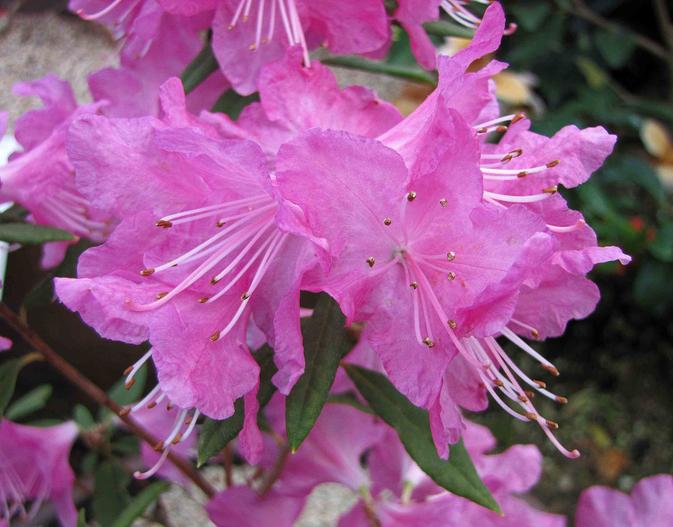Korean Rhododendron
(Rhododendron yedoense f. poukhanense)
Korean Rhododendron (Rhododendron yedoense f. poukhanense)
/
/

阿橋 HQ
CC BY-SA 2.0
Image By:
阿橋 HQ
Recorded By:
Copyright:
CC BY-SA 2.0
Copyright Notice:
Photo by: 阿橋 HQ | License Type: CC BY-SA 2.0 | License URL: https://creativecommons.org/licenses/by-sa/2.0 | Uploader: Rudolphous | Publisher: Wikipedia Commons
















Estimated Native Range
Summary
Rhododendron yedoense f. poukhanense, commonly known as Korean Rhododendron or Yeddo Rhododendron, is a deciduous or semi-evergreen shrub native to the Korean peninsula and northeastern China. It is typically found in mountainous regions, forest edges, and along stream banks, where it thrives under the canopy of taller trees. This species grows at a moderate rate to a typical height and width of 3-6 feet (0.9-1.8 meters), forming a dense, mound-like shape. The Korean Rhododendron is celebrated for its large, showy flowers that range in color from pink to purple and bloom profusely in the spring, creating a striking display against the backdrop of its dark green foliage.
The plant is valued for its ornamental flowers and its ability to thrive in challenging garden conditions where other plants might struggle. It is often used in residential landscapes for border planting, as a foundation plant, or in woodland gardens. Korean Rhododendron requires acidic, well-drained soils, and benefits from mulching to maintain soil moisture and temperature. It prefers part shade to full shade, making it suitable for understory planting. While generally low-maintenance, it can be susceptible to root rot if overwatered or planted in poorly draining soils, and it may also be prone to pests such as aphids and lace bugs. To maintain its shape and encourage flowering, occasional pruning after the blooming period is recommended.CC BY-SA 4.0
The plant is valued for its ornamental flowers and its ability to thrive in challenging garden conditions where other plants might struggle. It is often used in residential landscapes for border planting, as a foundation plant, or in woodland gardens. Korean Rhododendron requires acidic, well-drained soils, and benefits from mulching to maintain soil moisture and temperature. It prefers part shade to full shade, making it suitable for understory planting. While generally low-maintenance, it can be susceptible to root rot if overwatered or planted in poorly draining soils, and it may also be prone to pests such as aphids and lace bugs. To maintain its shape and encourage flowering, occasional pruning after the blooming period is recommended.CC BY-SA 4.0
Plant Description
- Plant Type: Shrub
- Height: 3-6 feet
- Width: 3-6 feet
- Growth Rate: Moderate
- Flower Color: Pink, Purple
- Flowering Season: Spring
- Leaf Retention: Evergreen
Growth Requirements
- Sun: Part Shade, Full Shade
- Water: Medium
- Drainage: Fast, Medium
Common Uses
Bee Garden, Bird Garden, Border Plant, Butterfly Garden, Deer Resistant, Groundcover, Hedges, Low Maintenance, Showy Flowers, Street Planting
Natural Habitat
Mountainous regions, forest edges, and along stream banks in the Korean peninsula and northeastern China
Other Names
Common Names: Yeddo Rhododendron
Scientific Names: Rhododendron yedoense f. poukhanense , Azalea poukhanensis , Rhododendron coreanum , Rhododendron hallaisanense , Rhododendron matsumurae , Rhododendron poukhanense , Rhododendron poukhanense var. plenum , Rhododendron yedoense f. albiflorum , Rhododendron yedoense f. leucanthum , Rhododendron yedoense f. plenum
GBIF Accepted Name: